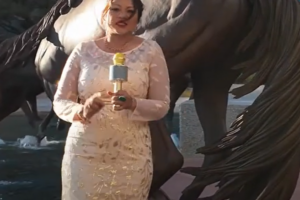Mexico’s President Andres Manuel Lopez Obrador took office in December, promising not to repeat the ‘failed policies’ of past administrations that have done little to stem a tide of drug-related violence that cost some 29,000 lives last year.
But events in the states of Sinaloa, Michoacan and Guerrero this past week, including two mass killings and an all-out gun battle on Thursday that saw security forces overwhelmed by cartel gunmen, have raised questions about the effectiveness of his new security strategy.
WHAT HAPPENED IN MEXICO THIS PAST WEEK?
On Monday, cartel hitmen shot dead at least 13 police in an ambush in Aguililla in the western state of Michoacan, long convulsed by turf wars between drug gangs, latterly the Jalisco New Generation Cartel (CJNG) and its enemies.
The following day, a gunfight left 14 civilians and one soldier dead in Tepochica, near Iguala, a city notorious for the 2014 disappearances of 43 student teachers. Tuesday’s mass killing in Guerrero raised questions about whether the armed forces used excessive force, reviving the specter of past executions.
Then came the bungled arrest on Thursday of the son of jailed kingpin Joaquin “El Chapo” Guzman that turned the streets of Culiacan in Sinaloa into a scene of nightmarish urban warfare.
Cartel gunmen surrounded security forces in the northwestern city and made them free Ovidio Guzman after his brief capture.
WHAT’S THIS NEW SECURITY STRATEGY?
Veteran leftist Lopez Obrador’s new strategy for battling crime focuses on addressing the root causes of violence, in particular reducing poverty, stamping out entrenched corruption, and giving young adults job opportunities.
He has boosted wages along the US-Mexico border, created thousands of apprenticeships, and is promoting investments in the impoverished south.
He says he believes in the inherent good of all Mexicans, and says “you can’t fight fire with fire,” and “hugs not bullets.”
As well as his emphasis on combating the social ills that spark violence, he has created a new National Guard force that replaces the federal police and has absorbed thousands of soldiers.
IS IT WORKING?
Not so far. Homicides in 2019 are on track to surpass last year’s record.
Analysts warn the government has not clearly explained how it will use the National Guard to outsmart the cartels. With no clear short term strategy, there is a sense on the ground that this government is less tough on gangs, said Falko Ernst, Mexico analyst with the International Crisis Group, who has done extensive fieldwork in crime-wracked states.
“The inertia and lack of definition of a security strategy by the government has allowed regional armed conflicts to spin out of control,” Ernst said. “Criminal group members and commanders have told me in Michoacan and in Guerrero that this (inertia) has meant a looser leash.”
Additionally, many of the National Guard have been rerouted to deal with a wave of illegal migration through Mexico at the behest of U.S. President Donald Trump.
WHEN DID THIS START?
Lopez Obrador regularly heaps blame on previous governments for the delicate security situation in Mexico.
Mexico’s ‘War on Drugs’ started in 2006 with former President Felipe Calderon, who sent in armed forces to tackle the increasingly powerful drug cartels, which had shifted gears from smuggling cocaine for the Colombian cartels to becoming full narcotrafficking operations themselves. Since then, more than 200,000 people have been killed in gang-fueled violence and over 40,000 are missing.
The crackdown led to the splintering of Mexico’s cartels and some notable wins for the government, including the arrest of ‘El Chapo’ Guzman. He escaped twice from jail in Mexico before being extradited to the United States, where he was found guilty in February of smuggling drugs and sentenced to life in prison.
The US government says that under Guzman’s leadership, the Sinaloa cartel imported and distributed tons of cocaine, marijuana, methamphetamine and heroin in the United States over more than two decades.
DIDN’T JAILING EL CHAPO PUT AN END TO THE VIOLENCE?
The extradition of Guzman was a double-edged sword.
It ‘appears to have led to violent competition from a competing cartel, the CJNG’, according to an August report prepared by the US Congressional Research Service. The CJNG had split from Sinaloa in 2010 and is considered by many analysts to now be the most dangerous and largest Mexican cartel.
Photos of Monday’s police ambush published on social media showed shot-up and burning police vehicles, as well as the slain officers. They also showed large placards signed ‘CJNG’, left on police vehicles, which warned police not to support rival crime groups, including Michoacan-based Los Viagras.
And even after Guzman was locked away for life in a Colorado prison known as “the Alcatraz of the Rockies,” the cartel he founded has flourished.
The Sinaloa cartel “has fought brutally for increased control of routes through the border states of Chihuahua and Baja California, with the goal of remaining the dominant drug trafficking organization,” the Congressional Research Service report said.
The cartel’s decentralized structure had allowed it to adapt, the report added.
Within this decentralized structure, Ovidio Guzman, one of ‘El Chapo’ Guzman’s at least 12 children, appears to have taken an active role. The US Department of Justice unveiled an indictment against Ovidio and one of his brothers in February, charging them with conspiracy to distribute cocaine, methamphetamine, and marijuana in the United States.
Security analyst Gladys McCormick at Syracuse University in the United States said Thursday’s apparent capitulation to the Sinaloa Cartel was “sending a loud message to other organized crime networks… that if they show up with enough firepower to a fight, they will win and get their way because the government does not have the wherewithal to fight back.”






















